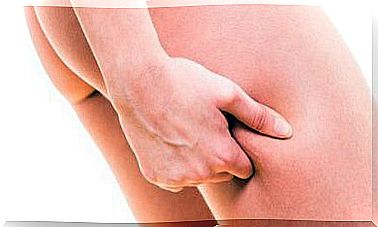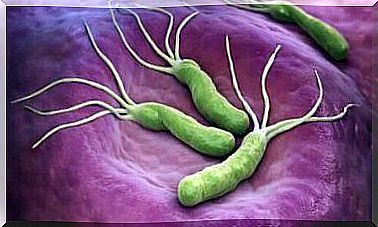Postmenopausal Osteoporosis: Causes And Treatment
A high percentage of women have a risk of developing postmenopausal osteoporosis. To prevent this disease, it is advisable to eat a diet that includes calcium supplements, to exercise and not to smoke. What should I know about this?

Postmenopausal osteoporosis is, like all kinds of osteoporosis, a disease characterized by weak bones. It is very common in women who have already gone through menopause because hormonal changes influence its onset. It is for this reason that it is called postmenopausal.
It is estimated that at least 40% of Caucasian women will suffer from a fracture caused by postmenopausal osteoporosis. This figure gives an idea of the importance of this disease for women’s health. A fracture significantly compromises the quality of life and generates many additional risks.
The term osteoporosis literally means “porous bone”. One of the great difficulties with postmenopausal osteoporosis is that most of the time it does not cause any symptoms until a painful fracture presents itself. In addition, a bone fracture increases the risk of suffering from another.
What is postmenopausal osteoporosis?

Postmenopausal osteoporosis is a bone disease whose main characteristic is the reduction in bone mass. It in turn involves an alteration of the bone microstructure. All of this makes women more vulnerable.
With osteoporosis, there is a decrease in bone strength. For there to be resistance, the density and quality of the bones must be sufficient. Density is determined by the amount of bone mass and the quality is related to the integrity of bone architecture. These two factors are thus altered in the case of osteoporosis.
It is estimated that 3 in 1000 women over the age of 50 suffer from a fractured femur each year due to postmenopausal osteoporosis. The forearm fracture is almost twice as high. The presence of a fracture significantly increases the risk of death in these women.
The absence of symptoms and their management
As we have pointed out before, postmenopausal osteoporosis, as well as all types of osteoporosis, do not generate symptoms. They then become visible in the event of a fracture, which usually occurs in the proximal femur, spine and distal forearm.
The only way to diagnose osteoporosis before fractures appear is by testing bone mineral density. These are radiological tests that help establish the state of bone density.
The results suggesting the presence of osteoporosis therefore allow early treatment to be started to prevent fractures. While this does not eliminate the risks, it reduces them to a manageable level.
Causes of postmenopausal osteoporosis

Under normal conditions, a person builds more bone tissue than they lose until about the age of 30. After this age, around 35, the opposite happens. We lose more bone tissue than we create. This then leads to a gradual loss of bone mass. When this process reaches a certain point, osteoporosis appears.
It has also been established that there is a direct link between menopause and osteoporosis. At the onset of menopause, the process of destruction of bone tissue accelerates. All of this indicates that low hormonal levels, especially estrogen levels, facilitate the development of postmenopausal osteoporosis.
Treatment
Until recently, hormone replacement therapy was the usual treatment to prevent postmenopausal osteoporosis. However, several studies have verified that its effectiveness is limited and that it also increases the risk of suffering from breast cancer, stroke, and venous thromboembolism.
Currently, in principle, non-drug therapy is used to prevent postmenopausal osteoporosis. It is a diet that includes a good level of calories, calcium and vitamin D.
Calcium food supplements are also strongly recommended. In addition, frequent exercise and stopping smoking are also recommended.
All postmenopausal women should adopt these measures. When the risk of osteoporosis is very high, drug treatment is usually advanced. The latter includes bisphosphonates, alendronate, risedronate, raloxifene or calcitonin, as appropriate.
Finally, it is hoped that a treatment with parathyroid hormone should be available soon. It has already been tested successfully. A very promising treatment with strontium salts is also being tested.









